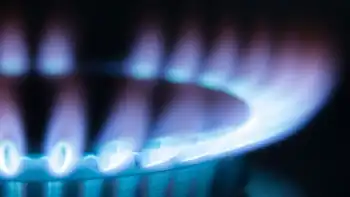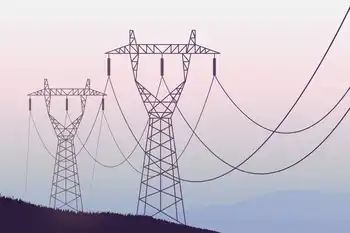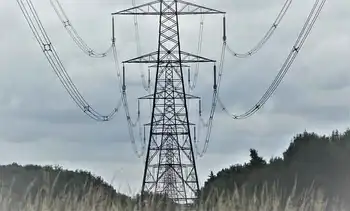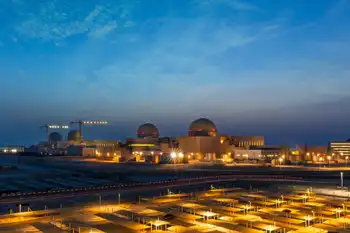New wave of solar panels could worsen air quality
It could create an entirely new economy for downtrodden Southern Nevada, help free the nation from its dependence on foreign oil and allow for the phasing out of power plants that are polluting the air and contributing to climate change.
But the most popular type of industrial solar technology has a dirty little secret: Many of these plants are not emissionfree.
Solar thermal plants concentrate the sunÂ’s heat to boil salt water or oil to run a steam turbine. The technology is more popular for largescale energy generation than photovoltaics, which convert the sunÂ’s rays directly into electricity. Solar thermal creates more electricity for the investment and has the potential to store the heat to create electricity at times when photovoltaic canÂ’t, such as at night or when the sun is blocked by clouds.
The problem is some solar thermal power plants release greenhouse gases and particulates into the air.
The amount is minuscule compared with what is spewed from natural gasfired power plants of the same size. But with potentially dozens of solar thermal plants expected to be built across the Southwest in the next few years, the cumulative effects could be problematic.
Nevada Solar One, among the first to be built in decades, has been operating in Boulder City since June 2007. The 64megawatt power plant is the only solar thermal plant operating in the state, and it is emissionfree.
But a new generation of larger and more powerful solar thermal power plants is planned for the Southwest. Unlike Nevada Solar One, many of these plants would need to be jumpstarted each morning by natural gas or propane gasfueled heaters and boilers.
And thatÂ’s where the air pollution comes in.
Environmental impact statements for two projects planned near Las Vegas — BrightSource Energy’s Ivanpah Solar Field and Solar Millennium’s Amargosa Farm Road solar project — note that those boilerenabled solar thermal power plants will send carbon monoxide, nitrogen oxide and particulates into the air.
Together, carbon monoxide and nitrogen oxide are the major components of ozone or smog. Breathing ozone can trigger a variety of health problems including chest pain, coughing, throat irritation, permanent scarring of the lungs and congestion. ItÂ’s particularly problematic for children, whose lung tissue is still forming, and for the elderly. The Environmental Protection Agency is proposing more stringent regulations regarding how much ozone can be in the air.
Solar thermal plants can emit particulates, microscopic particles of liquids and solids, from heaters and boilers and from maintenance vehicles used on site.
Exposure to these particles can be bad for lungs and hearts, according to the EPA. Scientific studies have linked exposure to particle pollution to respiratory problems, decreased lung function, chronic bronchitis and heart attacks.
The bright side of the solar thermal plants for the region is that individually they will create less air pollution than comparablepower fossilfuel plants, says Ben Machol, who manages the clean energy and climate change office for EPAÂ’s Region 9.
The 400megawatt Ivanpah project, for example, is projected to emit 33 tons of carbon monoxide a year. A combinedcycle natural gas plant putting out the same amount of electricity would release 400 tons a year.
The 464megawatt Amargosa plant would emit about 15 tons of nitrogen oxide a year a comparable natural gas power plant would send 100 tons into the air, Machol says.
According to the developer, the Amargosa plant would produce about 4.9 pounds of carbon monoxide per megawatt hour of electricity produced, compared with 822 pounds per megawatt hour for a natural gas plant.
They say their facility generates only 6.5 percent of the particulates of a natural gas facility on a permegawatthour basis.
The Ivanpah plant could emit about 8.5 tons of particulates a year, compared with 54 at a natural gas plant of the same size, Machol says.
The Sempra Energy solar plant, shown here, will be joined by yet another solar company after the Boulder City Council finalized a deal to lease about 1,150 acres in the El Dorado Valley to NextLight Renewable Power. The NextLight plant, which would be the third in Boulder City, is expected to be up and running by 2011.
So if it were a choice between a solar plant and a natural gas plant, solar wins the air quality category.
But no one is proposing dozens of new natural gas plants across the Southwest. The Obama administration and California are hoping solar plants can be built to meet anticipated demand for electricity to power household electronics, economic growth and electric vehicles. That is going to take a lot of renewable energy.
The Amargosa and Ivanpah projects are not the only solar thermal plants planned for the area.
Developers have about 60 solar power projects slated for federal land in Southern Nevada. Bureau of Land ManagementÂ’s records donÂ’t indicate how many of the projects would use boilers, but 32 are identified as either solar thermal or concentrating solar power, which includes both solar thermal and advanced solar photovoltaic technologies.
A few solar thermal projects also are planned for private or municipal land in Southern Nevada and several are planned near the California and Arizona borders.
The sheer number of applicants for industrialscale solar thermal plants in this area has some environmental activists worried that Southern NevadaÂ’s poor air quality could get worse.
A dozen projects such as the Ivanpah one would emit the same amount of ozone pollution as a fullscale 400megawatt natural gas power plant. Six similar solar thermal plants could create the same amount of particulate emissions as a natural gas plant.
Exactly how the large number of solar thermal power plants could affect Southern Nevada is not quantifiable, according to the EPA. ThatÂ’s because each one uses a slightly different technology and itÂ’s hard to demonstrate where their emissions will flow once they hit the air.
The BLM has to consider these cumulative effects during the environmental review for each plant, but it has little research to base its decisions on.
Related News

Restrict price charged for gas and electricity - British MPs
LONDON - MPs are calling for a cap on the price of gas and electricity amid fears consumers are being ripped off.
The Business, Energy and Industrial Strategy (BEIS) Select Committee says the Big Six energy companies have been overcharging for years.
MPs on the committee backed plans for a temporary absolute cap to fix what they called a "broken" energy market.
Labour's Rachel Reeves, who chairs the committee, said: "The energy market is broken. Energy is an essential good and yet millions of customers are ripped off for staying loyal to their energy provider.
"An energy price cap is now necessary and the…





